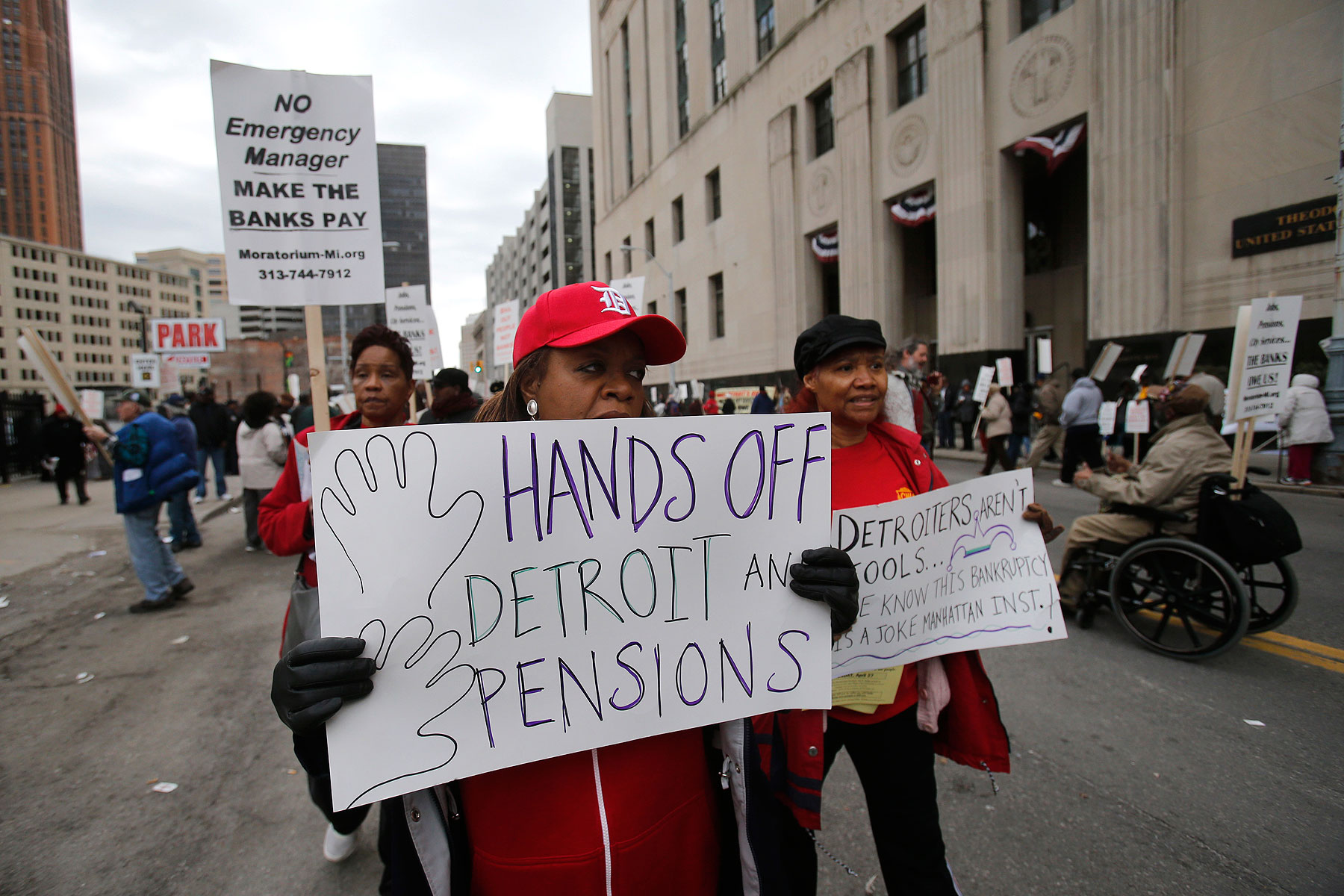
To the great relief of firefighters, police and other public employees in bankrupt Detroit, city fathers recently plugged a huge hole in their pension plans. For now, anyway, something close to these employees’ retirement dreams have been restored.
But how did they do it? Just a few weeks ago, Detroit leaders pegged the pension shortfall at $3.5 billion—about 20% of the city’s total indebtedness—and they were threatening to slash benefits beyond already expected cuts of up to 14% for cops and firemen and 34% for other workers. Miraculously, workers are now being assured that benefits cuts will be comparatively tame, amounting to less than a 5% reduction for those hardest hit.
Where did the money come from? Who found the pot of gold that is enabling the city to fill such a big funding gap? The answer, of course, is that no one found so much as a single hard penny. Actuaries simply juggled a few numbers on the city ledger and, voila, a paper windfall appeared. Don’t try this at home.
The most important accounting change was the assumed rate of return on investments held in the city’s two big retirement funds. Previously, the annual rate of return was estimated at 6.25% and 6.5% on the two funds. Now the city is assuming a rate of return of 6.75% on both funds. Why the bump? In part, anyway, the city seems to be taking heart in the stock market’s big gain last year, when after lackluster returns the past decade or so the S&P 500 rebounded with a glowing 32% total return.
A sustained higher rate of return would mean more annual income for the funds, making them better able to meet benefits promises with the same amount of assets. But the question remains: Is the higher return assumption realistic? One year is not a trend. Many planners believe we have decades of slow growth and modest returns ahead. A bankruptcy judge still must rule on the rosier projections.
A pension fund manager boosting the return assumption because stocks finally had a good year is a little like you at home predicting next winter won’t be so cold and slashing your heating budget. You might be right. But it’s just a guess—and if the guess is wrong you will have to find the money elsewhere to heat the house. Your finances only looked better briefly; the picture dimmed as soon as another cold winter hit.
So how realistic is the 6.75% return assumption? In the Detroit General Retirement System, annualized returns over the past seven years have been 3.9%, according to one analysis. The past five years, public pension funds have had a median annualized return of 5.3%, according to another analysis. Not so good, right?
But let’s not throw Detroit’s leaders under the bus just yet. Because people generally work and accrue benefits over 40 years or so, pension funds can take an extremely long view. The median pension fund return over the past 25 years has been 8.6%. The typical pension fund manager today assumes long-term rates of return between 7% and 8%. So Detroit has company, and may even seem cautious.
Among others, Warren Buffett has scolded pension managers for not recognizing a fundamental shift to slower growth and lower returns. But the new assumptions in the Motor City aren’t completely unsupportable. Maybe the city’s employees will catch a much-needed break and get the higher returns that pension managers hope for.
More Must-Reads From TIME
- The 100 Most Influential People of 2024
- Coco Gauff Is Playing for Herself Now
- Scenes From Pro-Palestinian Encampments Across U.S. Universities
- 6 Compliments That Land Every Time
- If You're Dating Right Now , You're Brave: Column
- The AI That Could Heal a Divided Internet
- Fallout Is a Brilliant Model for the Future of Video Game Adaptations
- Want Weekly Recs on What to Watch, Read, and More? Sign Up for Worth Your Time
Contact us at letters@time.com